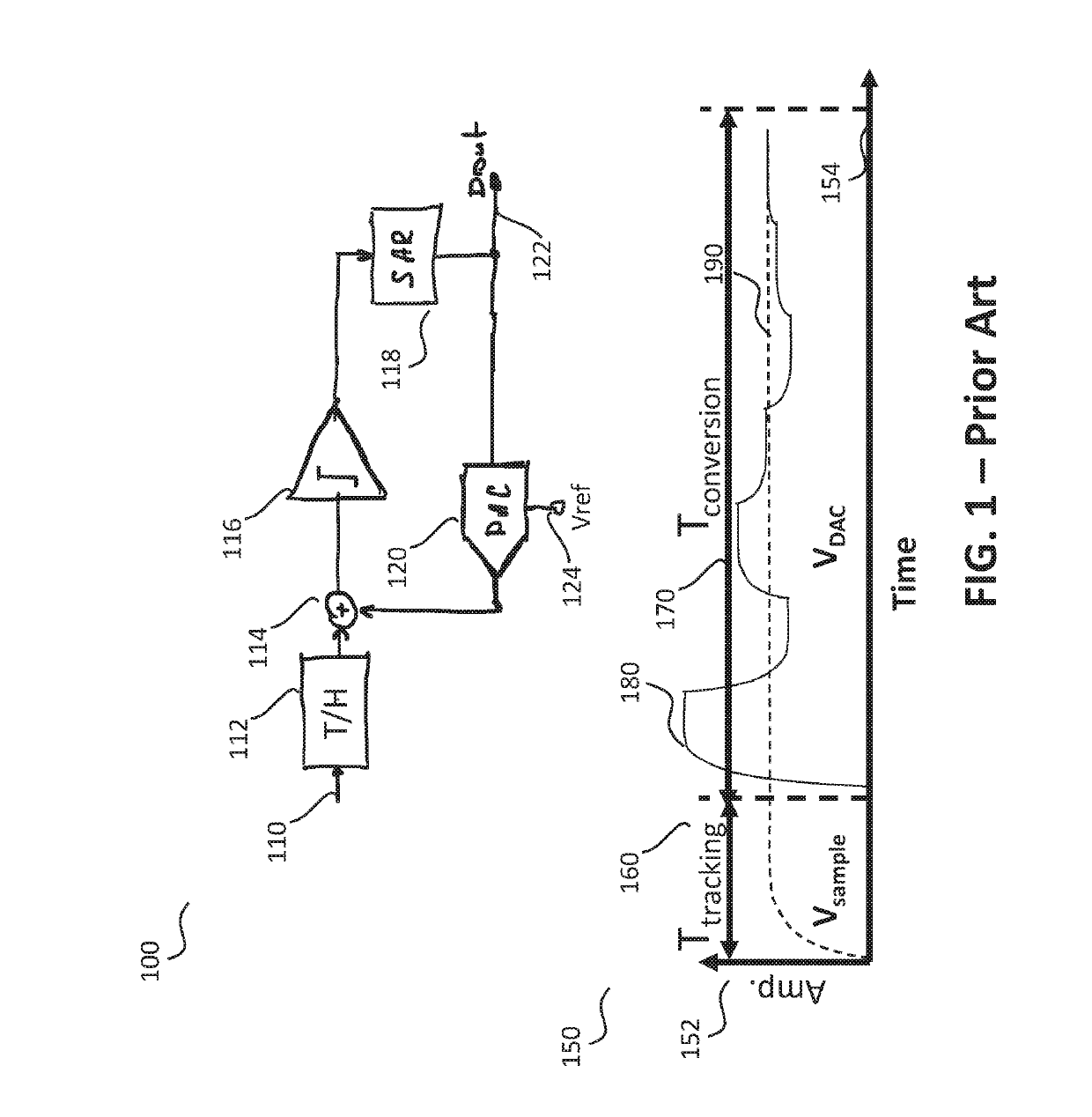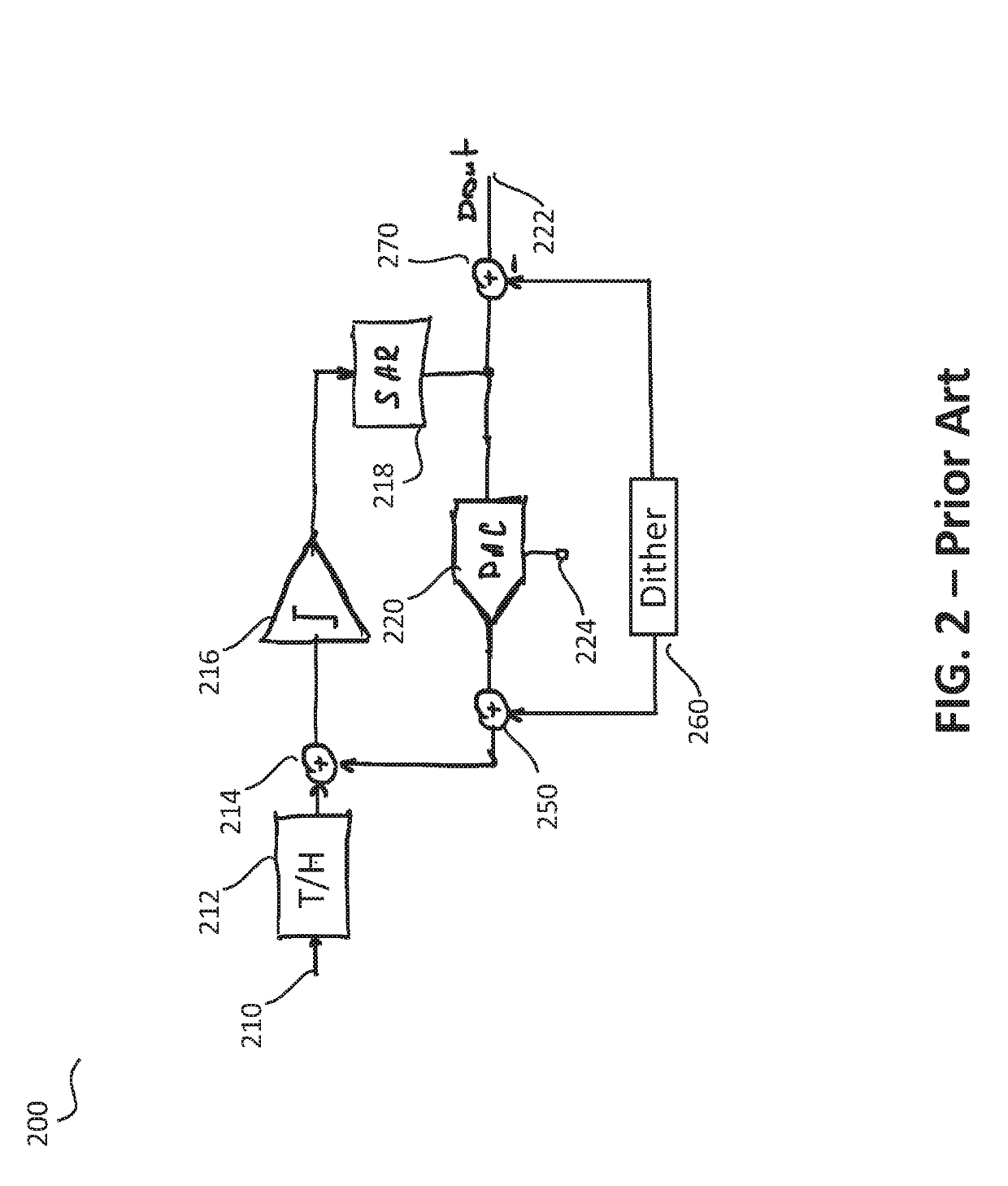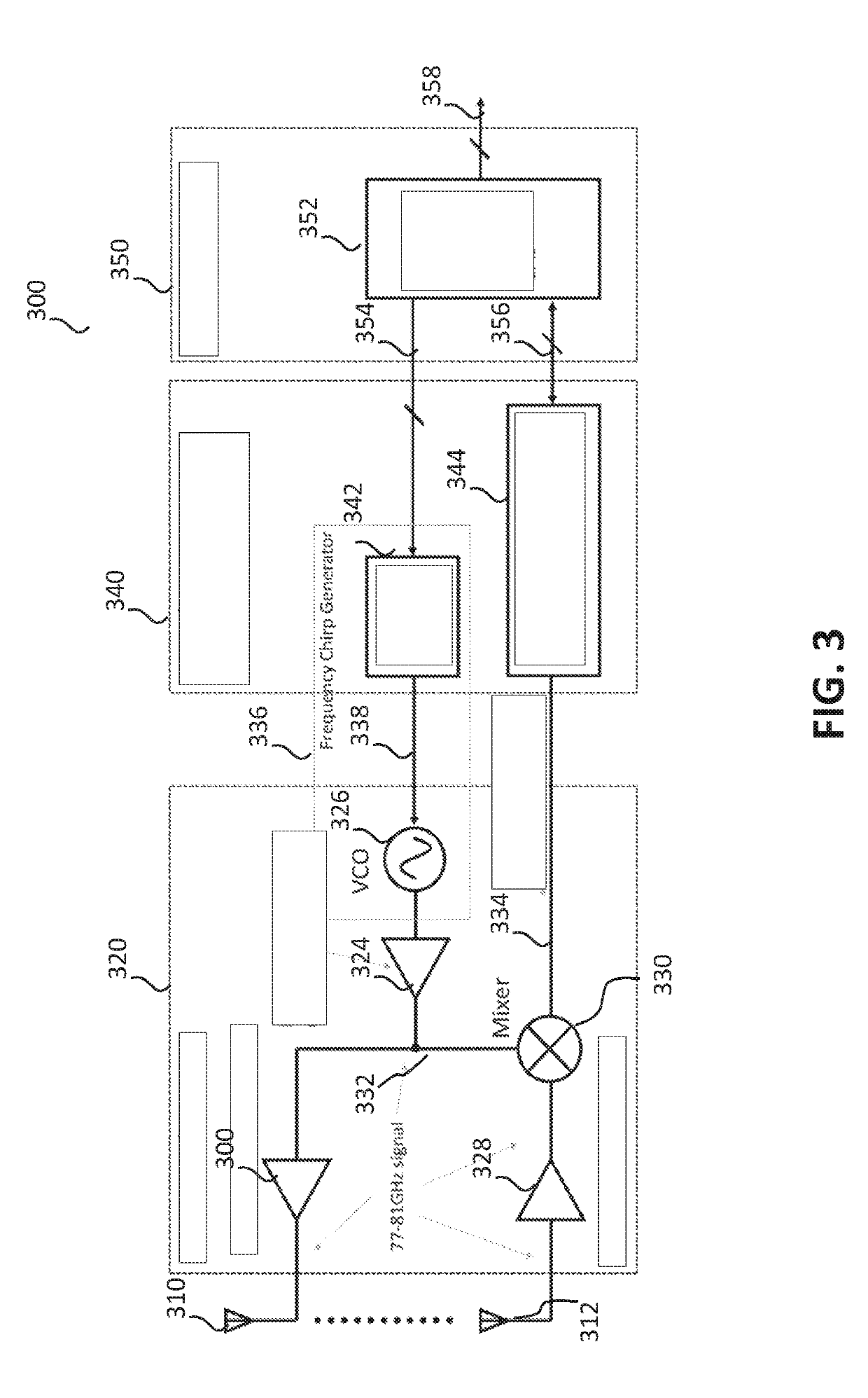Successive approximation register (SAR) analog-to-digital converter (ADC), radar unit and method for improving harmonic distortion performance
a technology of approximation register and harmonic distortion, applied in the direction of code conversion, physical parameter compensation/prevention, instruments, etc., can solve the problem of more errors in the generated reference level, the dac source (i.e. weight) and reference voltage deviating from the perfect value, and the design of such an adc is a challenging task. achieve the effect of improving the linearity performance of the ad
- Summary
- Abstract
- Description
- Claims
- Application Information
AI Technical Summary
Benefits of technology
Problems solved by technology
Method used
Image
Examples
Embodiment Construction
[0022]Because the illustrated embodiments of the present invention may, for the most part, be implemented using electronic components and circuits known to those skilled in the art, details will not be explained in any greater extent than that considered necessary as illustrated below, for the understanding and appreciation of the underlying concepts of the present invention and in order not to obfuscate or distract from the teachings of the present invention.
[0023]Differential nonlinearity (DNL) / integral nonlinearity (INL) errors due to mismatch of DAC cells in a SAR ADC are the main source of harmonic spurs for converting small signals. So far, known methods have been exploited to improve matching, e.g. by using larger size components or calibration. However, since component size is always limited by dimension constraints, and calibration techniques inherently exhibit a limited accuracy, some DNL errors will inevitably remain, and therefore degrade the ADC linearity.
[0024]The inve...
PUM
 Login to View More
Login to View More Abstract
Description
Claims
Application Information
 Login to View More
Login to View More - R&D
- Intellectual Property
- Life Sciences
- Materials
- Tech Scout
- Unparalleled Data Quality
- Higher Quality Content
- 60% Fewer Hallucinations
Browse by: Latest US Patents, China's latest patents, Technical Efficacy Thesaurus, Application Domain, Technology Topic, Popular Technical Reports.
© 2025 PatSnap. All rights reserved.Legal|Privacy policy|Modern Slavery Act Transparency Statement|Sitemap|About US| Contact US: help@patsnap.com



